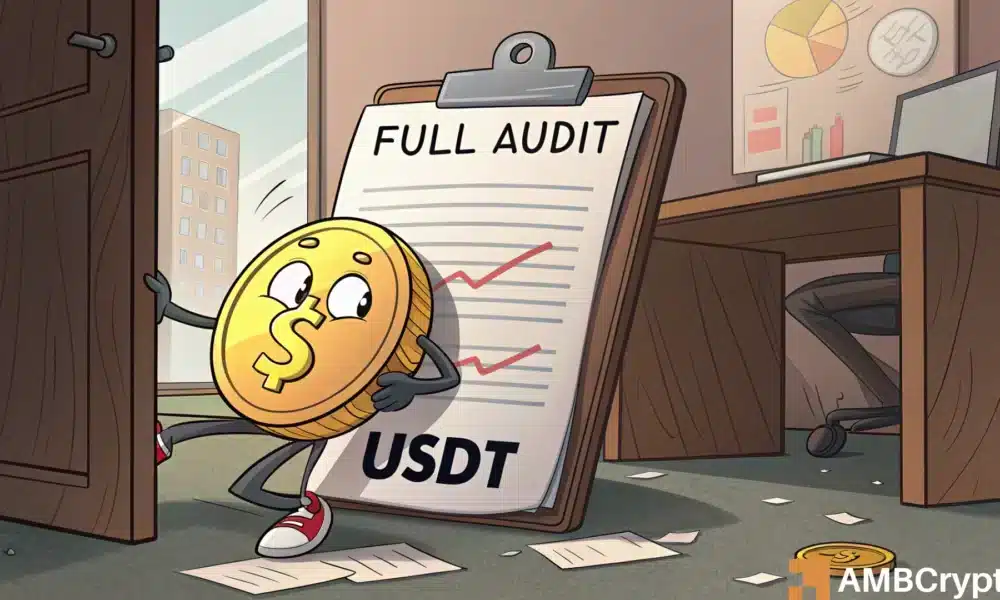The GENIUS Act and Tether: A Tipping Point for Stablecoins
As the landscape of digital finance evolves, recent legislative developments in the United States have put the spotlight firmly on Tether (USDT), the world’s largest stablecoin issuer. The GENIUS Act, which aims to create stringent regulations for stablecoins, presents Tether with a pivotal choice: comply with the new standards, exit the U.S. market, or introduce a new, compliant stablecoin. This article explores the implications of the GENIUS Act for Tether, the potential advantages for competing stablecoin USDC, and what this might mean for the digital currency ecosystem.
A Hard Line in the Sand
The GENIUS Act signifies a decisive move by U.S. lawmakers to enforce transparency and accountability within the rapidly growing stablecoin market. The legislation mandates comprehensive audits, transparent reserves, and robust oversight, targeting Tether directly. Senator Jack Reed explicitly indicated that Tether must now grapple with issues of accountability that have long been glossed over. Historically, Tether has dodged the requirement for full audits, leading to a complicated relationship with U.S. regulators. The company previously settled with the New York Attorney General for claims that USDT was not fully backed, resulting in an $18.5 million fine and operational restrictions in New York. The GENIUS Act resurrects the concerns surrounding Tether’s reserve practices, raising the stakes for its future in the U.S.
The Choices Ahead
With a compliance deadline looming between 18 and 36 months, Tether finds itself at a crossroads with three distinct paths: comply, exit, or innovate. Compliance with the new requirements would necessitate embracing full audits and adopting strict anti-money laundering (AML) and know-your-customer (KYC) measures. Alternatively, exiting the U.S. market could mirror Tether’s previous decisions in Europe, where regulatory pressures led to a retreat. However, abandoning the U.S. could mean sacrificing access to significant liquidity and institutional capital. Lastly, Tether could decide to launch a compliant, U.S.-only stablecoin. CEO Paolo Ardoino has hinted at this possibility, emphasizing a need for a product tailored to domestic requirements. Yet, such a move brings risks, including potential brand fragmentation and further scrutiny from regulators.
The Competitive Landscape Shifts
Despite Tether’s current dominance, owning 62% of the stablecoin market, the GENIUS Act could pave the way for competitors like Circle’s USDC to strengthen their positions. As a U.S.-compliant stablecoin, USDC may attract institutional investors seeking safer options amidst regulatory uncertainty. While the market share might not shift instantaneously, compliance could enable USDC to draw in capital from users who have previously relied on USDT. As stablecoins currently represent a mere 1.1% of the total U.S. dollar supply, the potential for rapid growth remains significant.
The Future of Digital Dollars
The outcome of Tether’s dilemma may have far-reaching implications for the broader digital currency landscape. Tether’s high market share raises questions about who would fill the void if it falters or exits the U.S. market. A successful transition toward compliance could maintain Tether’s dominant position, but a failure to adapt might open the gates for other players, primarily USDC. As stablecoins are increasingly seen as critical components of the digital economy, the resolution of these challenges could redefine how digital dollars function and are perceived in traditional finance.
Conclusion: A Watershed Moment for Tether and Stablecoins
In summary, the GENIUS Act represents a watershed moment for Tether and the stablecoin industry as a whole. With the clock ticking on compliance, Tether faces significant pressure to adapt or risk losing its coveted market position. As regulatory frameworks continue to tighten, the competitive dynamics among stablecoins are poised to shift dramatically. Observing how Tether navigates these challenges will not only illuminate the future of its own operations but also set the stage for the evolution of stablecoins and their role in the global economy. The digital finance realm stands at a crossroads, and the decisions made today will reverberate well into the future.


